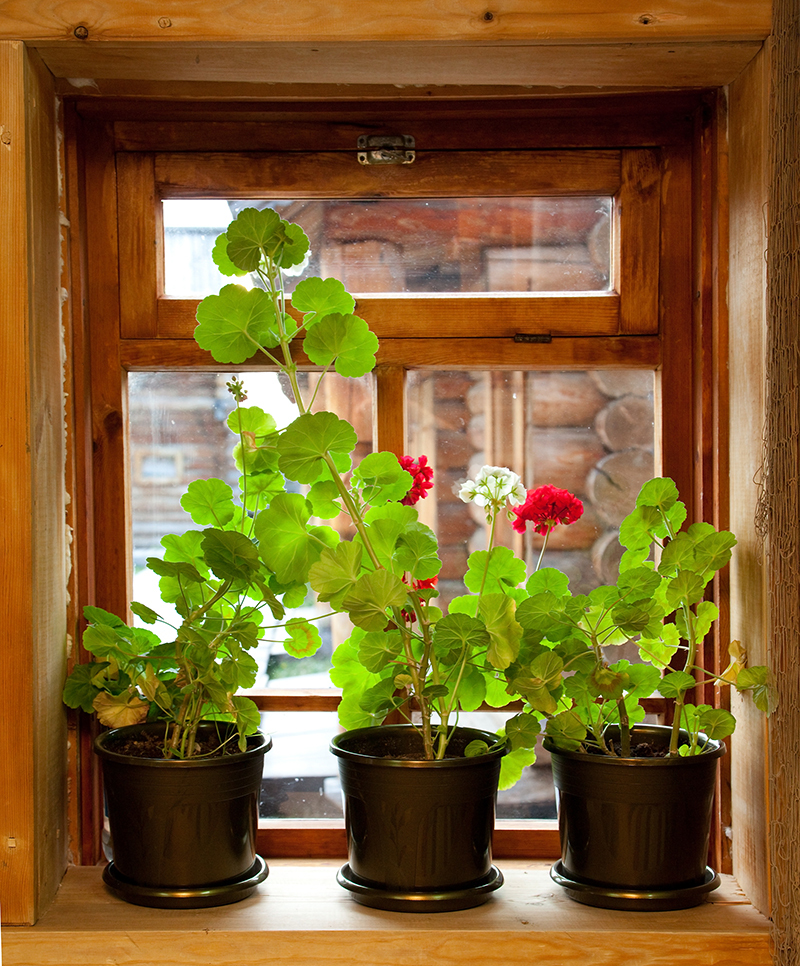Simple Ways to Preserve Poinsettia Beauty
Posted on 18/08/2025
Simple Ways to Preserve Poinsettia Beauty
Poinsettias are a classic decoration during the holiday season, renowned for their bright red, white, and pink bracts that add festive cheer to homes and offices everywhere. However, many people struggle to keep their poinsettia plants looking vibrant and healthy long past the holidays. With the right care and attention, you can extend the life and beauty of your poinsettias, ensuring they remain a captivating centerpiece well into the New Year and beyond. This comprehensive guide shares a variety of simple, practical ways to preserve poinsettia beauty and keep your plant thriving.

Understanding Poinsettias: More Than Just Holiday Decor
Poinsettias (Euphorbia pulcherrima) originate from Mexico and Central America. While they are most famous for their role in winter festivities, these plants are perennials in their native climate. With proper care, you can enjoy the rich hues and striking foliage for months or even years. Learning how to preserve the beauty of poinsettias starts with understanding their basic needs.
Why Do Poinsettias Lose Their Beauty?
- Improper watering
- Poor light conditions
- Exposure to temperature fluctuations
- Neglect after the holiday season
- Lack of humidity
Many people unknowingly compromise the appearance of their poinsettias by overlooking one or more of these key factors. Below, we delve into simple ways to keep poinsettias beautiful and vibrant throughout the year.
Essential Tips to Preserve Poinsettia Beauty
1. Perfect Watering Practices
One of the main reasons poinsettias deteriorate is improper watering. Overwatering can lead to root rot, while underwatering causes leaves and bracts to wilt and drop.
- Check Moisture: Insert your finger about one inch into the soil. Water the plant only if the soil feels dry at that depth.
- Even Watering: Water thoroughly until it drains from the bottom. Do not let your poinsettia sit in water; always discard any excess from the saucer.
- Tip: Use room-temperature water to avoid shocking the plant.
2. Give Your Poinsettia the Right Light
Poinsettias need adequate indirect sunlight to maintain their beautiful, colorful bracts. Too much direct sun can scorch the leaves, while inadequate light can cause fading and leaf drop.
- Place your poinsettia near a bright window, but avoid direct afternoon sunlight.
- If possible, select a spot with at least 6 hours of filtered daylight.
- Rotate the plant weekly to promote even growth.
3. Control Temperature and Humidity
Poinsettias prefer stable temperatures. Sudden drops or cold drafts can damage the plant, while extremely dry air can cause the bracts and leaves to shrivel.
- Maintain indoor temperatures between 65-75?F (18-24?C) during the day and above 60?F (15?C) at night.
- Avoid placing the plant near heaters, fireplaces, or cold window panes.
- Increase humidity by grouping plants together or placing the pot on a tray filled with water and pebbles, ensuring the pot's base does not sit directly in water.
4. Feed Your Poinsettia
To preserve poinsettia color and health, remember they need periodic feeding.
- Apply a balanced, all-purpose houseplant fertilizer (20-20-20) diluted to half strength every 2-4 weeks starting in late winter or early spring, after the main display period.
- Do not fertilize while the plant is in bloom during the holidays.
5. Pruning and Maintenance
Preserving the beauty of your poinsettia also means giving it a modest "spa day." Proper pruning encourages branching and a fuller appearance.
- Once blooming fades and leaves start to drop, prune stems back to about 4-6 inches from the soil.
- Remove any dead or fading leaves and bracts regularly to prevent disease.
- Pinch back new growth in spring and summer to promote bushiness.
Long-Term Poinsettia Care Strategies
1. Repotting for Continued Growth
If you wish to preserve your poinsettia past the holidays, consider repotting in spring when new growth appears.
- Use a fresh, well-draining potting mix.
- Choose a container only slightly larger than the previous one to prevent excess soil moisture.
- Gently loosen roots and remove any decayed areas before repotting.
2. Summer Care and Outdoor Life
- In regions with warm climates, poinsettias can go outdoors in late spring, after all danger of frost has passed.
- Acclimate your plant by placing it in a shaded location for a few days before exposing it to more sunlight.
- Keep the soil evenly moist, and feed every few weeks with a diluted houseplant fertilizer.
- Bring the plant indoors before nighttime temperatures drop below 55?F (13?C).
3. Reblooming: Bringing Back the Holiday Magic
With patience, you can encourage your poinsettia to rebloom and preserve its vibrant beauty for another holiday season. Follow these steps:
- Starting in late September or early October, move the plant to a location receiving complete darkness for 12-16 hours each night (such as a closet or covered box).
- During the day, return it to a spot with bright, indirect sunlight.
- Keep soil moist but not soggy and continue to fertilize every few weeks.
- The plant should begin developing colorful bracts after 8-10 weeks of this treatment.
Tip: Consistency is crucial--missing a single night of darkness can delay or prevent the production of vibrant bracts.
Common Mistakes That Shorten Poinsettia Beauty
- Overwatering: Leading to root rot and yellowing leaves.
- Insufficient light: Causes leaf drop and color loss.
- Ignoring drafts: Sudden cold air can quickly damage the plant.
- Neglecting humidity: Dry winter air can harm delicate bracts.
- Poor maintenance: Failing to prune or remove dead foliage encourages disease.
More Simple Ways to Enhance Poinsettia Longevity
1. Monitor for Pests and Diseases
- Check regularly for whiteflies, spider mites, aphids, and fungus gnats.
- If found, treat promptly with insecticidal soap or neem oil.
- Remove any infected leaves to prevent spread.
2. Avoid Ethylene Exposure
- Poinsettias are sensitive to ethylene gas produced by ripening fruits and exhaust fumes.
- Avoid placing your plant near fruit bowls or in garages.
3. Choose Quality Plants
- When purchasing, select poinsettias with tightly clustered, bright yellow true flowers (cyathia) at the center of the bracts.
- Avoid plants with wilted, yellowing, or damaged leaves.
- Inspect for signs of pests before bringing your plant home.
4. Handle With Care
- Poinsettia bracts and leaves are delicate. Avoid jostling or rubbing, which can cause bruising and leaf drop.
- When transporting in cold weather, wrap the plant loosely in paper or a bag to protect from temperature shocks.
Myths About Poinsettia Care and Safety
Poinsettias are often mistakenly believed to be highly toxic to humans and pets. In reality, while ingesting leaves may cause mild discomfort, reactions are typically limited. Still, it's best to keep all houseplants out of reach of small children and pets.
- Safe Handling: The sap may irritate skin; always wash your hands after handling.
- Pet Safety: Symptoms are generally mild if chewed (salivation, upset stomach), but call a vet if a pet consumes a large quantity.
Creative Ways to Display and Prolong Poinsettia Beauty
- Use as a centerpiece: Place in an attractive decorative pot with seasonal accents.
- Group with other plants: Surround with ferns, ivy, or evergreens for a lush display that raises humidity for all.
- Pot arrangements: Plant smaller poinsettias with companion indoor plants for a visually striking display and improved microclimate.

Summary: Enjoying Long-Lasting Poinsettia Beauty
If you want to preserve poinsettia beauty easily and effectively, remember:
- Water properly: Not too much, not too little.
- Give lots of bright, indirect light.
- Maintain steady, warm temperature and humidity.
- Feed and prune to promote new growth and fullness.
- Avoid exposure to drafts and chemicals.
- Consider encouraging reblooming for holiday displays every year.
With these simple ways to preserve poinsettia beauty, your plant can remain a stunning highlight in your home long after the festivities are over. Enjoy the vibrant color and lush foliage, and let your poinsettia be a symbol of health, care, and enduring beauty year-round!
Frequently Asked Questions About Preserving Poinsettias
How long can I keep a poinsettia beautiful after Christmas?
With proper care, poinsettias can remain attractive for several months and even live for years as a houseplant. Follow the guidelines above for best results.
Can I plant my poinsettia outdoors?
Yes, in USDA zones 9-11, well-cared for poinsettias can thrive outdoors as landscape plants. Always acclimate gradually and avoid frost exposure.
Why are my poinsettia leaves turning yellow and dropping?
This is often due to overwatering, lack of light, or exposure to cold drafts. Adjust care as needed for quick recovery.
How do I get my poinsettia to turn red again?
Follow a regimen of long nights (14+ hours of uninterrupted darkness) and bright days for 8-10 weeks leading up to the holidays.
Are poinsettias poisonous?
They are not highly toxic, but may cause mild irritation or digestive upset. As with all houseplants, keep out of reach of pets and children.
Preserving poinsettia beauty is surprisingly simple when you know what this unique plant needs. With a little diligence, your poinsettias will remain the star of your indoor garden for many joyful seasons to come!







